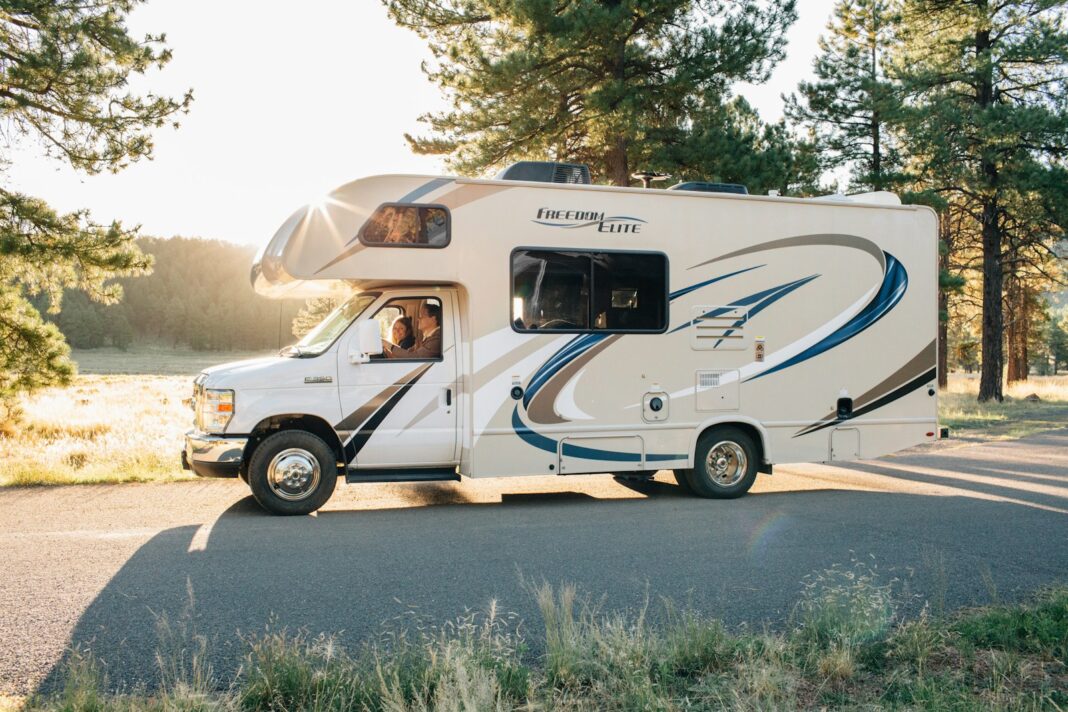Introduction
Recreational vehicles (RVs) have revolutionized the way people travel, offering comfort and freedom on the road. However, when traveling through hot climates, maintaining a cool and comfortable environment inside the RV is crucial. One of the most important components in ensuring this is the RV AC unit. Whether you’re a seasoned traveler or new to RV life, understanding how an RV air conditioning unit works, the types available, and how to maintain and troubleshoot them is essential for a pleasant journey.
In this comprehensive guide, we’ll delve deep into everything you need to know about RV AC units, from types and features to installation, maintenance, and troubleshooting tips.
What is an RV AC Unit?
An RV AC unit is a compact air conditioning system designed to fit into recreational vehicles. Unlike traditional home AC units, RV AC units are built to withstand the road’s vibrations, weather changes, and confined spaces. These units provide cooled air within the small area of an RV to maintain a comfortable temperature inside, especially during hot weather.
RV AC units generally come in two primary styles: rooftop AC units and portable AC units, both of which will be discussed later in this article. These systems typically run on electricity or, in some cases, can be powered by a generator, making them highly versatile for on-the-go travelers.
Types of RV AC Units
Selecting the right RV AC unit for your vehicle depends on various factors such as the size of your RV, power requirements, and your specific cooling needs. Here are the most common types of RV air conditioners:
Rooftop Air Conditioners
Rooftop AC units are the most common choice for RVs due to their space-saving design and efficiency. These units are installed on the roof of the RV and take up no interior space, making them ideal for smaller RVs or campers where space is limited.
Benefits of Rooftop AC Units:
- Saves interior space
- Easy to install
- Efficient cooling for larger RVs
Drawbacks:
- Requires professional installation
- Can add extra height to the RV, which may be an issue with low clearances
- Vulnerable to weather elements and potential damage
Portable RV Air Conditioners
Portable AC units are another option for those who need flexibility or can’t install a rooftop unit. These units sit inside the RV and typically vent out through a window or door. Portable units are ideal for smaller RVs or for those looking for a temporary solution.
Benefits of Portable AC Units:
- Easy to move around
- Doesn’t require professional installation
- Great for smaller spaces or short trips
Drawbacks:
- Takes up interior space
- May not be powerful enough for larger RVs
- Can require frequent emptying if it’s a unit that collects water
Ducted vs. Non-Ducted Systems
Rooftop AC units can be further divided into ducted and non-ducted systems.
- Ducted systems are connected to a network of ducts that distribute air evenly throughout the RV. This is a good option for larger RVs with multiple rooms or sections.
- Non-ducted systems, on the other hand, blow air directly from the unit into the space. These are generally simpler to install and are more common in smaller RVs.
How to Choose the Right RV AC Unit
Choosing the right RV AC unit depends on several key factors:
Size of Your RV
The size of your RV will determine how powerful your AC unit needs to be. AC units are rated by their BTU (British Thermal Units), which measures the amount of heat they can remove from a space. A small camper may only need a 5,000 to 8,000 BTU unit, while a larger RV might require 13,500 BTUs or more.
Power Source
Most RV AC units run on electricity and can be powered through shore power (an external electrical hookup) or a generator. Some units are also compatible with solar power systems, which can be a great eco-friendly option. It’s essential to ensure your RV can handle the power draw of the AC unit you choose.
Efficiency
Efficiency is another crucial consideration. Look for units with a high SEER (Seasonal Energy Efficiency Ratio) rating, which means they cool more efficiently while using less power. Energy-efficient units can save you money on fuel and reduce the load on your generator.
Noise Level
Noise is another factor to consider when selecting an RV AC unit. Some units are quieter than others, making them a better choice for light sleepers or for those who prefer a more peaceful environment.
How to Install an RV AC Unit
Installing an RV AC unit, especially a rooftop unit, can be a challenging task, but it’s not impossible for a handy person with the right tools. Here’s a basic outline of the steps involved in installing a rooftop RV AC unit:
Choose the Right Location
The first step is to decide where the AC unit will go. If you’re installing a rooftop unit, you’ll need to cut a hole in the roof of your RV. Many RVs come with a pre-cut hole for the AC unit, but if yours doesn’t, you’ll need to carefully measure and cut the correct size opening.
Prepare the Roof
Before installing the unit, ensure the roof is clean and dry. You’ll also need to seal the opening with a gasket to prevent leaks.
Install the Unit
Lift the AC unit into place and secure it using bolts or screws, following the manufacturer’s instructions. Be sure the unit is sealed properly to avoid any potential leaks during rain.
Electrical Hookup
Most RV AC units run on 120V electricity, so you’ll need to connect the unit to your RV’s electrical system. If you’re not comfortable working with electrical wiring, it’s best to hire a professional to handle this part.
Maintaining Your RV AC Unit
Regular maintenance of your RV AC unit is essential for ensuring it operates efficiently and lasts for a long time. Here are some maintenance tips to keep your unit in top shape:
Clean or Replace the Filters
One of the easiest and most important maintenance tasks is keeping the AC filters clean. Dirty filters restrict airflow and make the unit work harder, which can reduce efficiency and increase wear and tear.
Clean the Coils
Over time, the evaporator and condenser coils in your AC unit can collect dirt, which reduces their ability to cool the air. Make sure to clean the coils regularly to ensure optimal performance.
Inspect the Seals
If you have a rooftop unit, regularly inspect the seals around the unit to ensure no water is getting in. Leaks can cause significant damage to your RV.
Check the Thermostat
Ensure the thermostat is working correctly and replace it if it’s giving inaccurate readings.
Regular Professional Check-ups
While there’s a lot you can do on your own, it’s a good idea to have a professional check your AC unit every couple of years to ensure everything is in working order.
Common RV AC Unit Problems and How to Fix Them
Even with regular maintenance, problems can arise with your RV AC unit. Here are some common issues and how to troubleshoot them:
The AC Unit Won’t Turn On
If your unit won’t start, check the power source first. Make sure your RV is plugged into shore power or your generator is working correctly. Also, check the circuit breaker and reset it if necessary.
The Air Isn’t Cold
If the air coming out of the unit isn’t cold, there could be a problem with the refrigerant levels, the compressor, or the thermostat. Check the filters and coils first, as a clogged filter can reduce the unit’s cooling ability.
The AC Unit is Leaking
Water leakage is often due to clogged drainage lines or improper sealing around the unit. Make sure the unit is installed correctly, and clean the drainage lines regularly.
The Unit is Making Strange Noises
Unusual noises, such as rattling or clanking, could indicate loose parts or debris caught inside the unit. Turn off the unit and inspect it for any obstructions.
Conclusion: Stay Cool on the Road with the Right RV AC Unit
A properly functioning RV AC unit is essential for maintaining comfort during your road trips, especially in hot climates. Whether you opt for a rooftop unit or a portable one, understanding your cooling needs, selecting the right model, and maintaining it well will ensure your trips are cool, comfortable, and enjoyable.
By following the tips in this guide and staying on top of maintenance, you can prevent many common problems and extend the lifespan of your RV AC unit, ensuring years of comfortable travel.
FAQs
- How often should I clean the filters in my RV AC unit?
You should clean the filters every one to two months, depending on how often you use the unit and the environment in which you’re traveling. - Can I run my RV AC unit on solar power?
Yes, some RV AC units can run on solar power, but you’ll need a robust solar setup with enough panels and battery capacity to handle the power draw. - What size AC unit do I need for my RV?
The size of the unit you need depends on the size of your RV. For smaller RVs, 5,000 to 8,000 BTUs should suffice, while larger RVs may require 13,500 BTUs or more. - Is it worth getting a portable AC unit for my RV?
Portable units are great for smaller RVs or for those who need a temporary solution. However, they may not be powerful enough for larger RVs. - How can I make my RV AC unit more efficient?
Regular maintenance, such as cleaning filters and coils, and ensuring proper insulation in your RV can help improve the efficiency of your AC unit. - How long does an RV AC unit last?
With proper maintenance, an RV AC unit can last anywhere from 8 to 15 years.












